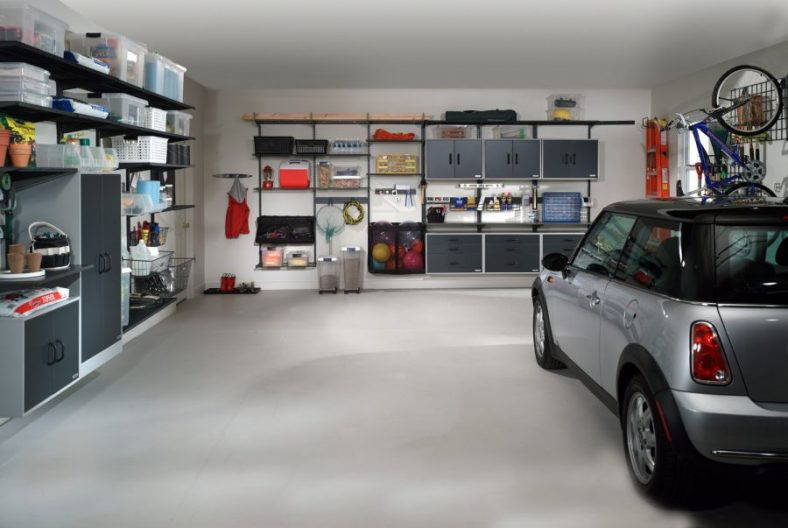If your garage has a coated floor, cleaning and maintenance shouldn’t give you a lot of headaches. Actually, the ease of maintenance is one of the primary reasons for having a coated floor. Still, there are some simple cleaning tips you should be aware of. They are pretty much the same for epoxy coated, polyurea, polyurethane and polyaspartic floors.
These garage floor coatings are resilient and capable of withstanding years of wear and tear. Yet, regular maintenance and cleaning can make their gloss last longer and prevent loose dirt from scraping it.
Weekly care
A quality 24″ or 36″ dust mop doesn’t cost much in your local home improvement store, and even less if purchased from Amazon. This simple cleaning tool will take care of 90 percent of your garage floor cleaning routines. Dust and dirt don’t normally stick to the floor, so use the dust mop once a week, or more often if needed.
With the dust mop, you’ll be able to clean the floors with polymer anti-slip formula as well. On the other hand, if you are dealing with a floor with an aggressive anti-slip aggregate, such as aluminium oxide, a soft bristle broom would be a better option. If your garage floor is built with contraction joints or saw cuts, vacuum them once a month to clean out the debris.
Heavy duty clean-up
A coated garage floor that sees a lot of vehicle and foot traffic will benefit from a good cleaning every 3 or 4 months. For this, you’ll need a hard foam mop or microfiber mop. Although, many people swear they wouldn’t use anything but a string mop, they are far from the best. They often leave streaks on glossy surfaces and don’t scrub as well as the other two types.
When using a foam mop, frequent rinsing is the key for the best result. Microfiber mops, on the other hand, come in different sizes, so you can choose the one that gets the work done the fastest. A microfiber mop with a pad lets you switch between your everyday dust mop and regular cleaning mop, reducing the number of tools you need for floor maintenance.
Cleaning products
A cleaning solution for regular floor cleaning is ½ cup of ammonia in a gallon of hot water. Use the microfiber or foam mop and rinse it frequently in a bucket to get rid of debris it picks. Ammonia solution works well even for floors with salt film and residue. For most clean-ups, you won’t be needing anything stronger.
You can also use 1 part Windex to 3 parts water ratio if you need a bit more cleaning power. Its formula, however, won’t leave a film on the coating. If you need to up your cleaning game to deal with grease and oil stains, Simple Green is a product you should definitely try. Start with mixing 1 part Simple Green to 8 parts water, and then add some more if needed.
Repainting
If you need to apply a new coating to your floor, you’ll need to remove any residue of old sealer and paint. You should do this before cleaning. Although environmentally friendly, chemical strippers are more expensive than most commercial solvents, and take more time to work. Still, bear in mind that they are much safer for your health and the environment.
Alternatively, you can use a floor grinder with special grinding heads for removing mastic, paint, and sealers. The process is definitely dustier but requires less elbow grease and chemicals. The right choice of concrete sealers and garage paint ensures long-lasting gloss and durability of your floor surface, but also makes cleaning much easier.
Taking care of a coated garage floor should be an easy chore. By applying these cleaning tips not only will your garage floor look like new for years, but you’ll also save money on repaint jobs.

